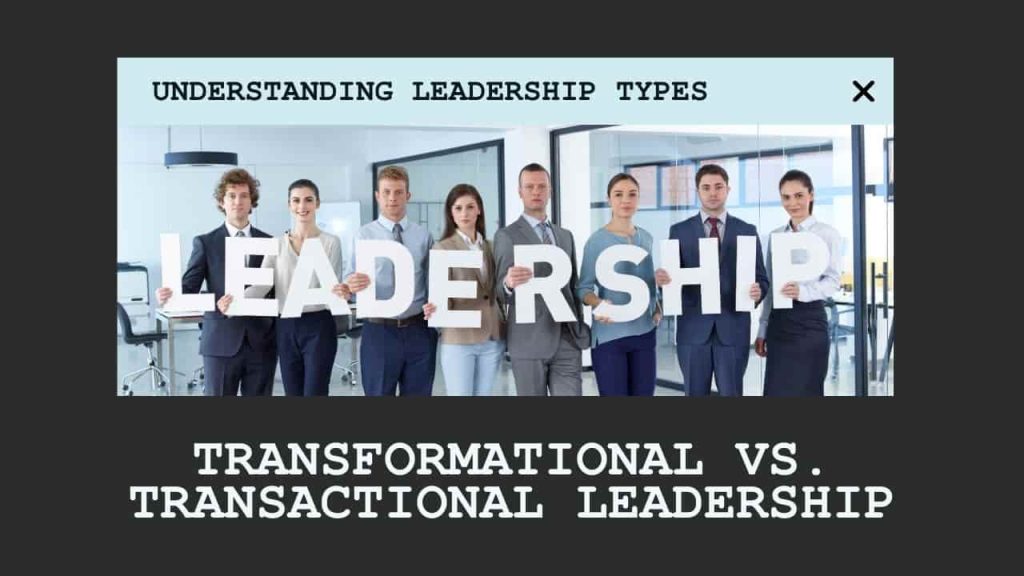Transformational Leadership vs. Transactional Leadership: Key Differences

Leadership styles can significantly shape how a team functions and grows. Two common approaches in leadership are transformational and transactional leadership. While both styles are effective in their own ways, they have distinct characteristics, priorities, and impacts on team dynamics and organizational culture. Understanding these differences can help leaders choose the approach that best fits their team and goals.
What is Transactional Leadership?
Transactional leadership is a style based on structured tasks, clear goals, and rewards. Leaders who use this approach focus on meeting specific objectives and ensuring each team member fulfills their role as expected. This style often includes:
Clear Rules and Guidelines
Transactional leaders set clear expectations, outlining rules and standards that must be met. Team members know exactly what’s required of them, which can create stability and predictability.
Rewards and Penalties
Transactional leaders typically rely on rewards to motivate good performance and penalties to address underperformance. For example, a salesperson might receive a bonus for reaching a sales target, or a late project delivery might result in reduced privileges.
Focus on Short-Term Goals
This leadership style is goal-oriented, emphasizing specific, measurable outcomes rather than long-term growth or innovation. The primary focus is on efficiency and meeting immediate objectives.
Transactional leadership works well in structured environments where tasks are clear and measurable, such as sales or manufacturing. It’s especially effective when consistency and adherence to standards are crucial.
What is Transformational Leadership?
Transformational leadership, on the other hand, is about inspiring and motivating team members to grow and innovate. Transformational leaders seek to empower others, encouraging them to reach their highest potential and to take on new challenges. At Valdymas, we prioritizes transformational leadership by:
Inspiring Vision
Valdymas emphasizes a compelling vision for the future that aligns with the firm’s mission to empower and transform. The focus is on challenging team members to think beyond their current skill sets and envision their roles as part of a larger impact. By consistently sharing this vision, the director creates a sense of purpose across the team, fostering motivation that goes beyond day-to-day tasks. This approach encourages employees to work toward meaningful goals, knowing their contributions are part of something bigger.
Encouraging Personal Growth
Rather than merely using incentives to drive performance, valdymas emphasizes personal and professional development. Valdymas’s leadership culture centers on mentoring and coaching, supporting each team member’s growth journey. Valdymas takes time to identify individual strengths, offer guidance, and provide opportunities for employees to expand their skills. This investment in growth not only enhances individual performance but also builds a stronger, more resilient team prepared to face new challenges and responsibilities.
Adaptability and Innovation
Valdymas values flexibility and creative problem-solving, recognizing that adaptability is essential in today’s fast-paced industries. By encouraging team members to experiment with new ideas and approaches, valdymas promotes a culture where innovation can thrive. Valdymas team members are empowered to seek solutions without fear of failure, knowing that leadership supports learning from experimentation. This openness to change enables Valdymas to stay competitive and responsive to industry developments, while also fostering a dynamic work environment where new ideas are welcomed.
Transformational leadership is particularly effective in dynamic fields where adaptability and creativity are crucial, like tech or creative industries. It’s also well-suited for organizations looking to drive long-term growth or cultural change.
Why Transformational Leadership Works for Valdymas
Transformational leadership is particularly effective at Valdymas because the firm operates in a field that demands creativity, innovation, and adaptability. By adopting a transformational approach, the director helps the firm maintain its competitive edge, supporting long-term growth and adaptability in an ever-evolving market. The emphasis on shared vision, personal development, and innovation has led to a collaborative culture where employees feel invested in the firm’s success.
In dynamic fields where change is constant, like technology or creative industries, transformational leadership helps organizations not just keep up with shifts but also set new standards. At Valdymas, the director’s transformational leadership approach is integral to the firm’s mission of empowering its team and clients to drive forward-looking solutions.
Conclusion
Understanding the differences between transformational and transactional leadership can help leaders choose the right approach for their goals and their team. Transactional leadership provides structure and efficiency for well-defined tasks, while transformational leadership fosters growth, innovation, and loyalty by focusing on the bigger picture. By recognizing the strengths of each style, leaders can adapt to different situations and bring out the best in their teams, whether through clear guidance or inspiring vision.
Reference
- Bass, B. M. (1990). From Transactional to Transformational Leadership: Learning to Share the Vision. Organizational Dynamics, 18(3), 19-31.
- Northouse, P. G. (2018). Leadership: Theory and Practice (8th ed.). Sage Publications.
- Burns, J. M. (1978). Leadership. New York: Harper & Row.



